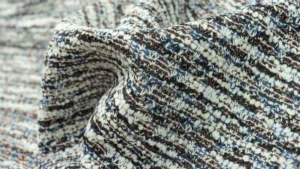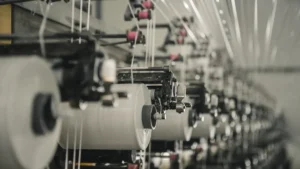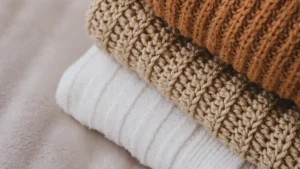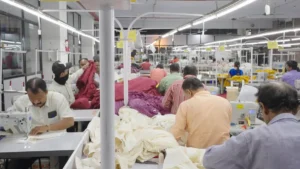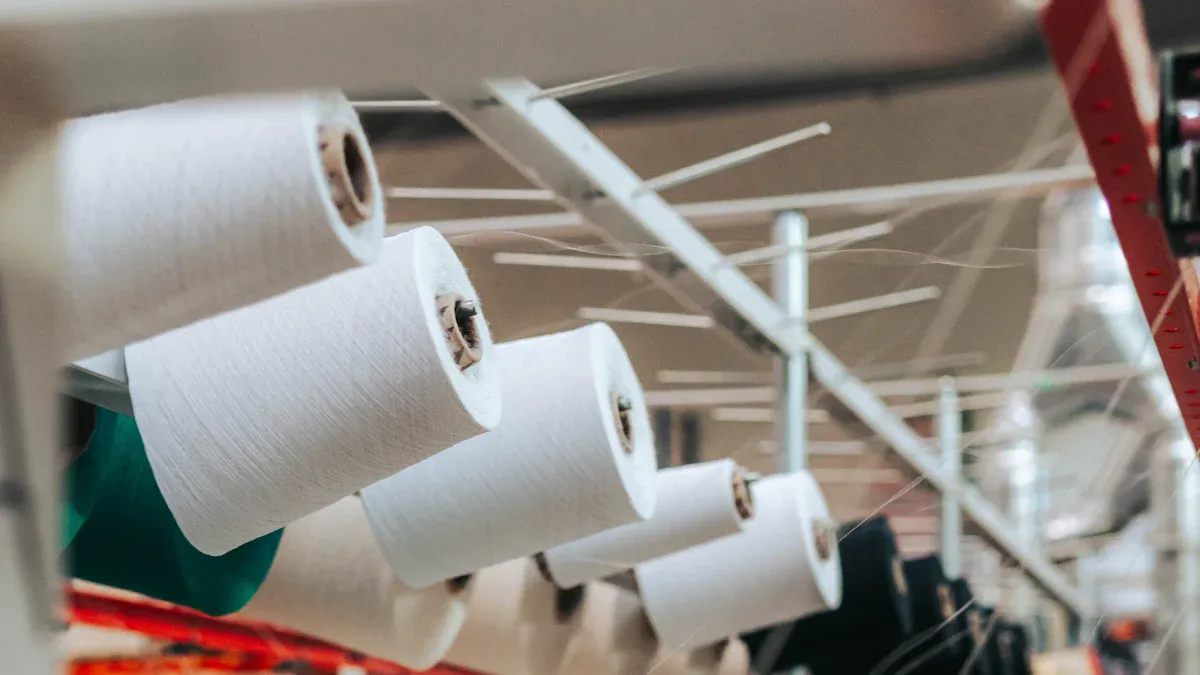
B2B buyers in Vietnam look for modern knitting factories to get premium cable-knit products. These factories in Vietnam use new machines to make sure products are good and safe for the environment. Teams in Vietnam care about the planet by using green ways and safe materials. Sourcing managers check that every modern knitting factory in Vietnam follows strict rules for quality. Factories in Vietnam care a lot about the environment and making good products. Getting products from Vietnam means picking a modern knitting factory that cares about the planet. Leaders in Vietnam set new high standards for caring about the environment and getting great products.
Key Takeaways
Modern knitting factories in Vietnam use new machines and smart data. This helps them make cable-knit products faster. They also make less waste.
Factories have strict quality checks. They have important certifications. This makes sure products are safe and reliable for buyers.
Vietnamese factories care about the environment. They use recycled materials and save energy. They also follow green practices.
Buyers can ask for custom cable-knit patterns and materials. This helps them make unique styles for the fashion market.
Good communication with Vietnamese suppliers is important. Long-term partnerships help buyers manage risks. They can also adapt fast to new fashion trends.
Modern Knitting Factory Overview
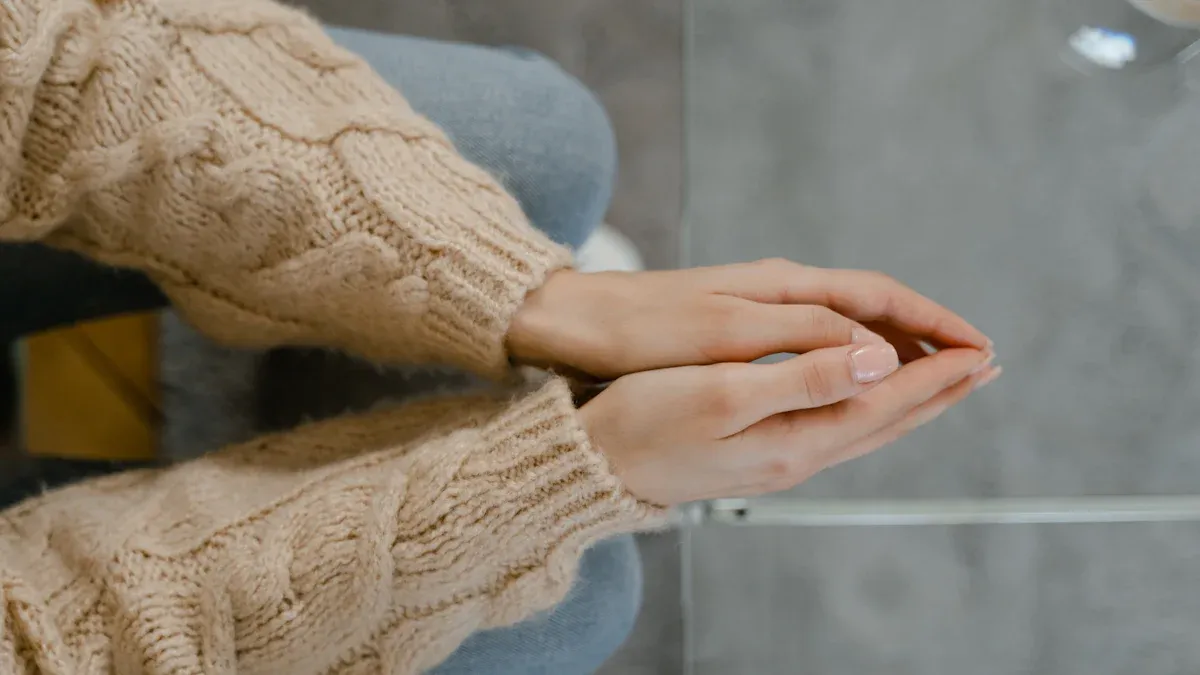
Advanced Technologies
Modern knitting factories in Vietnam use new technology to lead the fashion world. Artificial intelligence and big data help them guess what styles will be popular. These tools also help find mistakes fast and make the supply chain better. Double knitting machines in Vietnam make clothes much faster, up to 60% more. These machines also help save money on workers and fixing costs. The fashion industry gets help from smart tension control and pattern software. These tools make it easy to change designs and make things special for customers. Teams in Vietnam use remote checks to keep machines working well. Data from these systems helps factories waste less yarn, about 30% less, and use 20% less power. Energy recovery systems reuse 40% of moving energy, which helps the planet.
Factor | Traditional Machine | Double Knitting Machine |
|---|---|---|
Production Speed | 100 garments/hour | 160-180 garments/hour |
Labor Costs | $8.50/hour | $6.20/hour |
Maintenance Costs | 15% annual | 9% annual |
Floor Space | 100% | 70% equivalent output |
Production Processes
Factories in Vietnam mix old skills with new ways to work faster. Robotic knitting machines use AI to make fabric quickly and well. IoT lets people watch and control machines from far away, so they stop less. Seamless and 3D knitting lets factories make whole clothes in one go. This means less hand work and less time putting pieces together. Robotic arms feed yarn and finish jobs very carefully. Factories in Vietnam can work all day and night, making more clothes. Automated systems find and fix mistakes, so there is less waste and fewer slowdowns. Automation helps make special items and fill orders fast, which is important for fashion. Using recycled yarn is now normal in Vietnam’s factories.
Robotic arms change patterns fast.
Automated systems mean factories need fewer skilled workers.
Custom designs and quick changes help meet what customers want in fashion.
B2B Advantages
B2B buyers get many good things when they choose modern knitting factories in Vietnam. Just-in-time sourcing means orders come fast and stores do not need to keep too much stock. Using data helps factories plan better and guess what is needed. Vietnamese factories make high-quality products that are always the same. Personalization helps brands be different in the fashion world. Factories use smart data systems to track orders and manage supplies. This makes everything clear and builds trust. Because factories care about the planet and work well, Vietnam is a great place for making and buying clothes for the world.
Tip: B2B buyers should pick factories in Vietnam that use smart data, care about the planet, and can make special items to stay ahead in fashion.
Premium Cable-Knit Product Features
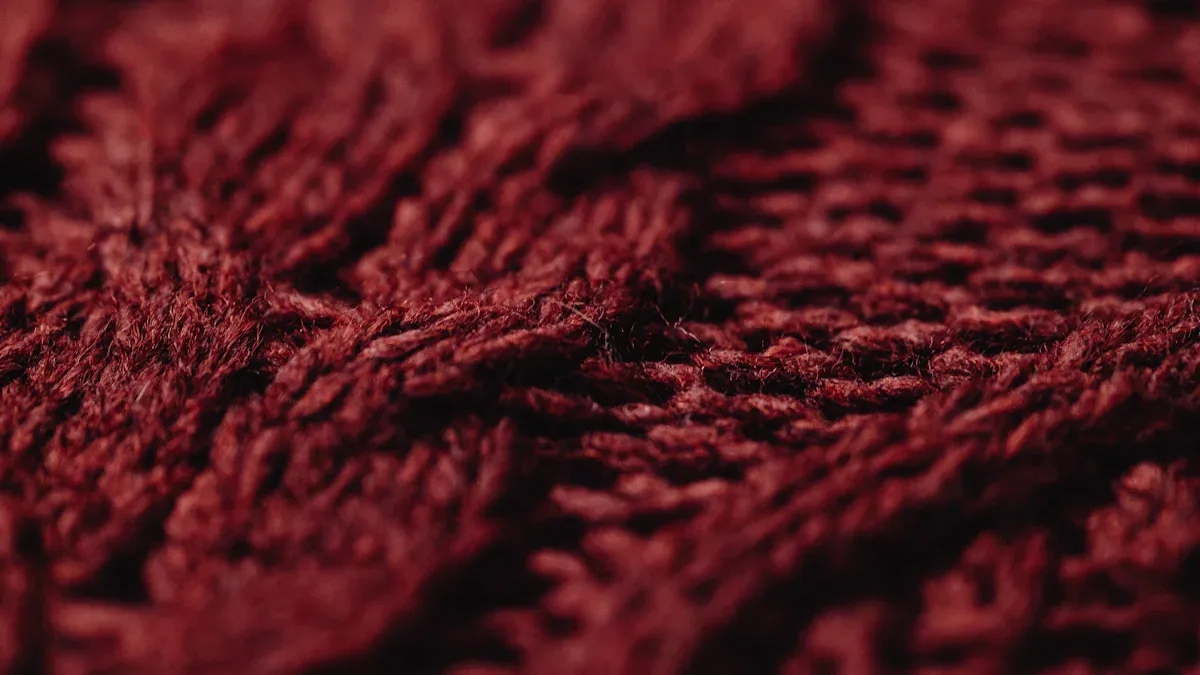
Cable Knit Patterns
Cable knit patterns are very important in fashion. Factories in Vietnam use new machines to make many cable designs. These patterns give knitwear more style and depth. People like cable knits because they look classic and modern. Vietnamese women’s clothing brands often pick bold cables for their best clothes. Factories can change the size and shape of cables to fit new trends. Personalization is a big part of fashion today. Buyers want special cable patterns for their clothes. Factories have many cable styles, from simple twists to hard braids. This helps brands get noticed in the busy fashion world.
Note: Cable knit patterns can change how clothes look and feel. Brands use personalization to make their own styles for their clothes.
Material Selection
Material selection is key for good and comfy cable-knit clothes. The fashion industry wants fibers that are soft, strong, and good for the planet. Factories in Vietnam get yarns like cotton, wool, and recycled blends. These materials help meet the need for eco-friendly fashion. Clothing brands want fibers that feel nice and last a long time. Vietnamese women’s clothing makers test yarns for strength and softness. The industry also likes materials that are hypoallergenic and let air through. Personalization lets brands pick special yarns for their clothes. Factories give buyers many choices to match their brand values. The right material helps clothes do well in stores and fashion shops.
Material Type | Comfort | Durability | Sustainability | Popular Use in Fashion |
|---|---|---|---|---|
Cotton | High | Medium | High | Everyday clothing |
Wool | High | High | Medium | Winter apparel |
Recycled Yarn | Medium | High | Very High | Eco-friendly fashion |
Gauge and Texture
Gauge and texture shape how cable-knit clothes look at the end. Gauge tells how tight or loose the stitches are. The fashion industry uses different gauges for light or heavy clothes. Fine gauges make soft, thin clothes for warm weather. Thick gauges make warm, chunky clothes for cold days. Texture comes from the yarn and the cable pattern. Factories in Vietnam use new machines to control gauge and texture well. Personalization lets brands pick the feel they want for their clothes. Buyers often ask for special textures to fit new trends. The industry likes smooth, even stitches for top women’s clothes. Vietnamese women’s clothing brands use texture to make their fashion lines special. The right gauge and texture help clothes stand out in fashion.
Tip: Brands should work with factories to pick the best gauge and texture for their clothes. Personalization makes sure each clothing line fits what retail customers want.
Sourcing Process for B2B Buyers
Supplier Research
B2B buyers begin by looking for suppliers in Vietnam. The industry wants factories that make good products and are reliable. Many buyers use trade shows, websites, and reports to find the best partners. Vietnamese factories are special because they use new machines and care about the planet. Buyers want factories that have done well with clothes and cable-knit fashion before.
A good supplier gives the same quality every time and answers fast. They also talk clearly with buyers. Many buyers check if the factory has made women’s clothes or other special items. They look at old orders, what customers say, and any awards or certificates. Leaders in Vietnam often share lots of facts about how much they can make and how they check quality. This helps buyers compare and pick the best factory.
Tip: Buyers should make a checklist for finding suppliers. The list can have things like quality, how much they can make, if they help the planet, and if they offer special choices.
Sampling and Evaluation
After picking some suppliers, buyers ask for samples. Sampling is a very important step. Factories in Vietnam send samples to show their cable-knit work, material, and special skills. Buyers test these samples for how they fit, feel, and last. The industry wants samples to be just like the real product.
Buyers use test results to score each supplier. They check if the factory can follow fashion and store needs. Vietnamese teams often give facts about yarn, how they make things, and how they check quality. This helps buyers see if the supplier can do big orders well.
A table can help buyers compare suppliers:
Supplier Name | Sample Quality | Personalization | Data Transparency | Lead Time | Sustainability |
|---|---|---|---|---|---|
Factory A | Excellent | High | Detailed | 10 days | Strong |
Factory B | Good | Medium | Basic | 14 days | Moderate |
Factory C | Fair | High | Detailed | 12 days | Strong |
Buyers also ask how the factory makes special designs. Many Vietnamese brands want cable-knit patterns that are unique. The industry likes suppliers who can change fast for new styles and store needs.
Negotiation and Orders
When buyers pick a supplier, they start talking about prices and orders. In Vietnam, this means talking about price, how many items to order, and when things will be ready. Buyers use facts from old orders and market news to set fair prices. Vietnamese teams share facts about how long things take, shipping, and how to pay.
Buyers care about quality, trust, and being able to change orders. They want suppliers who can handle changes in size or design. The industry likes factories that share clear facts about orders and shipping. Many buyers use online tools to manage orders, track shipping, and see updates right away.
Note: Good quality and strong trust are very important for long-term success. Buyers should work with factories that use data and offer special choices.
After the order is set, buyers watch production with online dashboards. Vietnamese leaders give updates on every step, from yarn to shipping. This helps buyers keep track of stock and follow new trends fast. The industry needs good talking and sharing of facts to keep making clothes well and on time.
Quality and Certifications
Quality Control
Modern knitting factories in Vietnam care a lot about quality. Teams check every step to make sure products are good. Workers look at yarn, machines, and finished clothes. They check for even stitches and strong seams. They also want the fabric to feel smooth. Managers use digital tools to watch quality data. These tools help find problems early. Factories teach workers to follow quality rules. They give new training when machines change. Quality teams test samples from each batch. They keep records to show buyers their high quality.
Tip: Buyers should ask for reports from the quality team before big orders.
Industry Standards
Factories in Vietnam follow top rules for quality. Many have ISO 9001 certificates to show good management. Some also meet OEKO-TEX and GOTS standards. These rules help buyers trust the cable-knit products. Factories show certificates in offices and online. Buyers can check these during visits. Meeting these rules means factories use safe dyes. They also test for bad chemicals. This keeps workers and customers safe.
Standard | Focus Area | Benefit to Buyers |
|---|---|---|
ISO 9001 | Quality Management | Consistent quality |
OEKO-TEX | Chemical Safety | Safe for skin |
GOTS | Organic Materials | Eco-friendly production |
Product Testing
Product testing makes sure items meet quality needs. Factories test for color, shrinking, and fabric strength. They use machines to pull, stretch, and wash samples. Teams check if cable-knit patterns stay nice after washing. They also test for pilling and fading. Buyers sometimes ask for extra tests for special orders. Product testing helps fix problems before shipping. This step keeps the brand’s good name.
Note: Regular product testing keeps quality high and stops returns.
Environmental Sustainability
Sustainable Practices
Modern knitting factories in Vietnam care about the environment. They use green ways to help the planet at every step. These factories pick recycled yarns and organic fibers to lower harm. They use machines that save water and lights that use less energy. Teams recycle waste and use dyes that are better for the earth. They watch each part of making clothes to meet green goals. Many factories plant green spaces around their buildings to help nature. Workers learn about helping the planet and get rewards for good ideas. These actions make it possible to make clothes in a green way. This helps the industry move toward better clothing for the earth. Vietnamese factories show that caring for the planet is very important. They use technology to check their impact and share results with buyers. This focus on the planet builds trust and shows they really care.
Tip: Buyers should ask for reports on green actions and check if factories use green ways.
Compliance and Ethics
Factories in Vietnam follow strong rules to help the planet. They meet local and world standards to protect the earth. Teams check every step to make sure it is good for the planet. They use safe chemicals and test water to keep it clean. Factories join programs that help the earth and share their progress. They teach workers to follow rules that protect the planet. Many factories get awards for green actions and show them to buyers. They work with groups that check for fair work and green actions. These steps show they care about doing the right thing. Vietnamese factories think caring for the planet and being fair go together. They want every buyer to see how much they care.
Factories use checks to see if they help the planet.
Teams share green goals every year.
Leaders give rewards to workers who help the planet.
Caring for the planet is part of everything in the factory. Buyers trust factories that show they care and prove their green actions.
Women’s Apparel Production
Product Range
Vietnam is a leader in making high-quality women’s clothes. Factories there make many kinds of cable-knit clothing for stores. The main products are sweaters, dresses, cardigans, and tops. Vietnamese brands offer both old and new cable-knit styles. These clothes are popular in North America, Europe, and Asia Pacific. Buyers want clothes that are well-made and use safe materials.
Factories in Vietnam use new machines to make stylish women’s clothes. Digital knitting and 3D modeling help make detailed cable-knit designs. These tools let brands change styles quickly for each season. E-commerce and online ads help factories sell to more people and offer more choices.
The knitwear market has many styles, and cable knits are a favorite.
Sweaters and dresses are the best-selling items in stores.
Athleisure trends make people want comfy and cool knitwear.
Online shopping helps brands offer more styles and custom clothes.
Design Considerations
Design teams in Vietnam listen to what the fashion world wants. They use research to follow new trends in women’s clothes. Buyers care most about comfort and style. Factories pick green yarns like organic cotton, bamboo, and recycled fibers. The fashion world wants clothes made in a good way and with high quality.
Personalization is a big trend in stores today. Vietnamese factories use digital tools to make special cable-knit patterns for each brand. Social media and influencers help decide which styles are popular. Factories in Vietnam change fast to keep their clothes new and exciting.
Tip: Brands should work with Vietnamese factories to make special cable-knit designs that fit new trends and what stores want.
The fashion world in Vietnam grows by using new tech, green ways, and knowing what stores need. This makes sure every piece of clothing is top quality and looks great.
Building Supplier Relationships
Communication
Good communication is very important in fashion sourcing. Teams in Vietnam use clear messages and real-time data to help buyers. They share schedules, order changes, and shipping details on digital dashboards. This lets buyers see every step, from yarn to finished cable-knit products. Factories in Vietnam use video calls and instant messages to fix problems fast. They also send reports with quality and order updates. Good talking helps build trust and stops mistakes in making clothes. Buyers can ask for updates or changes for new fashion trends. Teams in Vietnam answer quickly, so the process stays smooth and reliable.
Vietnamese suppliers use data tools to track orders.
Updates help buyers change plans for new fashion needs.
Fast feedback helps with quick changes in design and personalization.
Tip: Buyers should make clear rules for sharing updates and data. This helps stop confusion during sourcing.
Long-Term Partnerships
Long partnerships between buyers and teams in Vietnam have many good points. Studies show trust and teamwork make the supply chain stronger and safer. Factories in Vietnam build good relationships by sharing data and working closely with buyers. This teamwork uses resources better and means fewer audits are needed. When buyers and suppliers work together, they can handle big changes in fashion and sourcing. Synergy theory says trust and working together help everyone win in making clothes. These partnerships help brands get more from personalization because factories can change fast. A study of 739 companies showed strong communication and long partnerships help money results in fashion.
Teamwork gives better visibility and flexibility in sourcing.
Trust helps buyers get better data for making choices.
Long partnerships help with fast changes in design and personalization.
Risk Management
Risk management is very important when getting cable-knit products from Vietnam. Teams use data to find problems early and fix them before they get big. Factories in Vietnam watch every step, from yarn to final checks. They use digital tools to look for delays, quality problems, or supply chain issues. Buyers and suppliers make backup plans for surprises. This teamwork helps brands keep up in the fast fashion world. Personalization can add risk, but strong data systems help manage it. Factories in Vietnam often check and update their risk plans with new data and trends.
Watching data helps find risks in sourcing and making clothes.
Backup plans keep orders safe if there are supply chain problems.
Reviews help teams change plans for new risks in fashion and personalization.
Note: Buyers should ask suppliers in Vietnam about their risk systems. They should check how data is used to keep sourcing safe.
Getting premium cable-knit clothes for fashion needs a clear plan. Buyers should care about quality, the environment, and making things special. Using smart ways to find suppliers helps companies earn more and make strong partnerships. Checking suppliers for many things helps match what stores and brands need. Caring for the planet and making custom items help fashion move forward. New factories use tech to meet store needs and help the earth. Focusing on quality, green actions, and special designs helps brands do well in fashion and stores.
B2B buyers should use these smart ways to do well in fashion and selling clothes.
FAQ
What makes Vietnamese cable-knit factories stand out for B2B buyers?
Vietnamese factories use new machines and green ways. They care about making good products fast and safe for the earth. Many factories let buyers pick special designs. Teams talk clearly with buyers. B2B buyers trust these factories because they work well and keep high standards.
How do factories ensure consistent product quality?
Quality teams check each step, from yarn to finished clothes. Digital tools help watch quality at every stage. Factories follow strict rules and teach workers often. Testing products often helps find problems early. Buyers get full reports for every order.
Can buyers request custom cable-knit patterns or materials?
Yes, buyers can ask for special patterns or materials. Factories use digital tools to make new styles. Teams work with buyers to fit what brands want. Personalization helps brands be different in stores.
What certifications should buyers look for in a supplier?
Buyers should look for ISO 9001, OEKO-TEX, and GOTS certificates. These show the factory meets top rules for quality and safety. Certificates help buyers trust the supplier and show they care about the planet.
How do factories support environmental sustainability?
Factories use recycled yarns, save water, and make less waste. They follow green rules and teach workers to help the earth. Many factories share reports each year about their green work. Buyers can ask for these reports to see what factories do for the planet.



